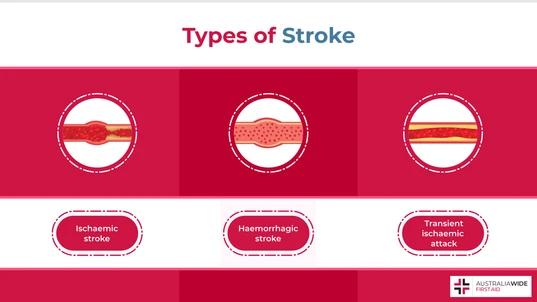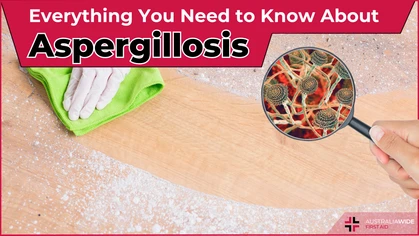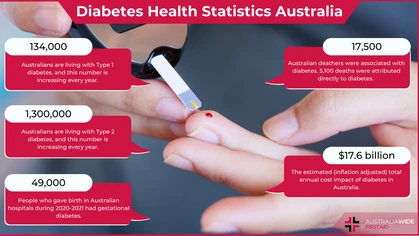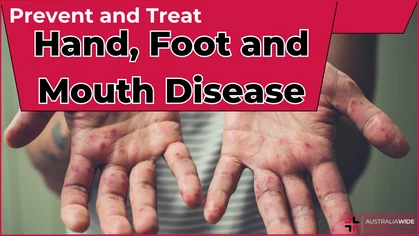Types of Stroke: Causes, Symptoms, and Treatments

Disease

A stroke occurs when the blood flow to a part of the brain is disrupted, either by a blood vessel clot or a blood vessel rupture. It is important to know the different types of stroke, so that you can proactively manage the symptoms and safeguard your health.
A stroke occurs when the blood flow to a part of the brain is disrupted. This stops oxygen and vital nutrients from reaching the brain cells, which can cause them to die and leave the casualty with permanent brain damage. Without prompt medical treatment, strokes can lead to long-term physical, emotional, and intellectual complications. In this article, we are going to explore the 3 main types of stroke (ischaemic, haemorrhagic, and transient ischaemic attack), so that you can better understand their causes, symptoms, and treatments.Causes
Ischaemic Stroke
According to the Brain Foundation, an ischaemic stroke occurs when there is a block in an artery that supplies blood to a part of the brain. If the blockage lasts for more than a few minutes, the tissues in the affected part of the brain can begin to die. If the blockage is not cleared within a few hours, this can cause the entire part of the brain to become scarred and cease working properly.Haemorrhagic Stroke
As cited by Healthdirect, a haemorrhagic stroke occurs when a blood vessel in the brain suddenly ruptures (intracerebral haemorrhage), or when there is bleeding in the space surrounding the brain (subarachnoid haemorrhage). In both cases, the extra blood exerts significant pressure on the soft brain tissue, thereby depriving it of oxygen and nutrients, and causing it to become swollen and inflamed.Transient Ischaemic Attack
Per the Stroke Foundation, a transient ischaemic attack (TIA) occurs when the blood supply to a part of the brain is temporarily blocked. Unlike an ischaemic stroke, a TIA only lasts for a few minutes, as the blockage clears itself before any of the affected brain tissue begins to die. TIAs serve as an important warning sign that the casualty may experience a full stroke in the near future.Symptoms
The Stroke Foundation recommends using the letters of F.A.S.T to remember the main symptoms of stroke. As cited by the American Stroke Association, the letters of F.A.S.T stand for:- F = Face Drooping: Does one side of the face droop or is it numb? Ask the person to smile. Is the person’s smile uneven?
- A = Arm Weakness: Is one arm weak or numb? Ask the person to raise both arms. Does one arm drift downward?
- S = Speech Difficulty: Is speech slurred?
- T = Time to call Triple Zero (000) if you see any of these signs.
- Weakness, numbness, or paralysis in other parts of the body, either on one or both sides.
- Blurred vision or loss of vision in one or both eyes.
- A sudden and severe headache with no known cause.
- Dizziness, loss of balance, or an unexplained fall.
- Difficulty swallowing, speaking, or understanding.
Treatments
Strokes are medical emergencies, and you should call Triple Zero (000) immediately if a casualty fails the F.A.S.T test. The same goes for TIAs; though they only last for a few minutes and do not usually cause long-term brain damage, they indicate that the casualty could experience a full stroke within the next few days or weeks. As such, TIAs should be investigated properly so that the casualty’s risk factors can be proactively managed.Risk Factors
The blood clots that cause TIAs and ischaemic strokes typically occur in blood vessels that have a build-up of plaque. The process by which cholesterol builds up in the walls of blood vessels and forms plaque is called atherosclerosis. The ruptures that cause haemorrhagic stokes, meanwhile, typically result from hypertension – prolonged high blood pressure that damages blood vessel walls and makes them weaker. As such, lifestyle-related factors that can increase your risk of stroke include:- Smoking: Tobacco products and e-cigarettes contain nicotine, which can narrow a person’s blood vessels, make their heart beat faster, and thereby raise their blood pressure.
- Lack of regular exercise: Muscle contractions help blood circulate, so inactivity can slow down a person’s blood flow, facilitate the build-up of cholesterol in their blood vessels, and thereby make them more prone to blood clotting.
- Heavy drinking: Alcohol can increase the level of renin in the blood, which can decrease how much fluid the body eliminates as urine while causing the blood vessels to constrict, thereby leading to high blood pressure.
Final Thoughts
As we have seen today, there are three main types of stroke: ischaemic stroke, haemorrhagic stroke, and transient ischaemic attack (TIA). When a person experiences a stroke, the blood flow to their brain is disrupted due to a blood vessel clot or a blood vessel rupture. All strokes must be treated as medical emergencies as, the longer the blood flow to the brain is disrupted, the greater the casualty’s risk of long-term brain damage. To learn how to identify, manage, and prevent the symptoms of stroke, check out the recommend resources below and book a First Aid course with us today: And for more information on the risk factors and signs of stroke, check out the National Stroke Foundation and their annual awareness campaigns, including National Stroke Week.
Originally published at
https://www.australiawidefirstaid.com.au/resources/types-of-stroke
as part of the Australia Wide First Aid Articles Library









